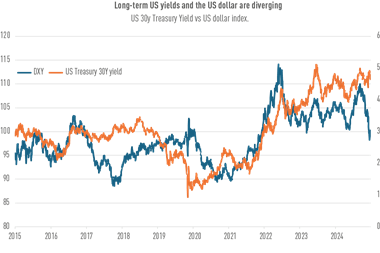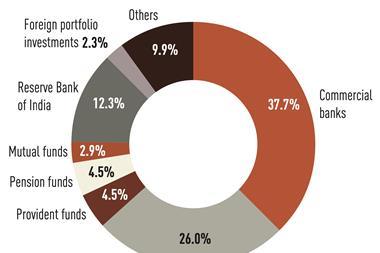Asian real estate investment trusts (REITs) have been a wonderful success story. Since the launch of the first Japanese REIT (J-REIT) in September 2001, market capitalisation has grown to $151bn by the end of April this year. The Asian REIT market rebounded after the global financial crisis and is now much larger than it was going into the crisis. The reason for this is a combination of a number of new initial public offerings (IPOs) coming onto the market and the growth of existing REITs, particularly in Japan and Singapore.
We can expect this market to continue growing strongly, which will help to sustain institutional investment in Asian real estate. This is for a number of reasons. One reason is that the level of securitisation of investment grade real estate in Asia is very low.
Compared with countries like the US and Australia, a relatively small proportion of investment-grade real estate in Asia is held in REIT-type vehicles. While Japan is the biggest market in the Asian REIT market, domestically REITs are still a small component of the Japanese real estate universe. If the level of securitisation of Asian investable real estate was at US levels the market capitalisation of the sector would be over $500bn. So it will become a significant component of the regional capital markets and provide plenty of opportunity for global investors.
Another reason why we can expect this market to continue to grow is that a lot of investment grade real estate in Asia is held in private hands and on company balance sheets, which will not necessarily be sustainable in the longer term. A third reason is that the volume of investment-grade real estate in Asia Pacific, particularly in the emerging markets, is likely to grow strongly, adding to the pool of assets available for securitisation.
A further reason why we can expect the Asian REIT markets to grow is that, over time, we expect REIT-type structures to emerge in the other two major regional economies, China and India. Neither country currently has a REIT regime, which has led to assets being listed in Singapore and Hong Kong.
The likely impact of the advent of REITs in these countries is shown by recent research by the Asia Pacific Real Estate Association (APREA) on the size and liquidity of the Asia-Pacific real estate markets.
The Asia-Pacific real estate markets currently account for over $7trn in investable real estate, 27% of the global market. This Asia-Pacific real estate market share is expected to increase significantly to 39% in 2021 and to 49% in 2031, with the Asia-Pacific real estate market size projected to increase from $7trn to $45trn by 2031. This increase will be driven by the significant role of the developing Asia-Pacific real estate markets, whose global real estate market share is expected to increase from 10% to 39% by 2031.
According to the research, the Asia-Pacific region will contain five of the top 12 global real estate markets by 2021, compared with only three of the top 12 global real estate markets in 2011. This reflects significant real estate market growth over the period from China (first in terms of market growth, based on US dollar growth), India (second), Indonesia (7th), South Korea (8th) and Japan (10th). This means that five of the top 10 major real estate growth markets over 2011-21 would be in the Asia-Pacific region, and over 50% of the global real estate market growth is expected from Asia-Pacific over this period.
The Securities and Exchange Board of India (SEBI) introduced a proposal for a REIT law in December 2007, but for a long time after that nothing much happened.
However, APREA has been engaging closely with SEBI over the last couple of years and we have submitted a series of proposals. At the time of writing it seems likely that a REIT-type law will develop, either based on the 2007 draft REIT regulation or as a new section in existing law.
China currently has an estimated $1.86bn of investable real estate, constituting 7% of the global market. In the past there have been a number of uncoordinated private projects aimed at developing a model REIT law. The measures that the government has adopted in recent years to cool the property market have had the effect of taking REITs off the table for the time being. However, there are signs that this is changing. As part of the government’s efforts to encourage private sector participation in affordable housing it has been announced that an affordable housing REIT is being developed. In addition, it is argued that REITs should be distinguished from the activities that have led to the residential market heating up. REITs seem to be coming back on the agenda and it is only a matter of time before we see a REIT market in China.
A challenge confronting all emerging markets is the need for credible and robust supporting regulatory infrastructure. When a REIT law is introduced in India or China it will probably be some time before the market gains acceptance beyond local investors. Issues that need to be addressed include title assurance/security, availability of information and credibility of valuations.
Having said that, most emerging markets in Asia have made significant strides in improving levels of transparency and corporate governance in recent years. In addition, it has recently been announced that China will issue real estate registration rules by the end of June 2014. The move, which is in line with the government’s requirements, aims to better implement property laws, safeguard real estate transactions and protect legal property rights.
Of the other markets in Asia that have yet to establish REIT markets, the Philippines enacted a law in 2009, but unfortunately it is not in operation owing to supporting regulations not having been promulgated. This has been unfortunate given the strong interest of international investors in Philippines real estate and the IPOs that were in the pipeline. It is possible that we may need to wait for a change in administration before REITs finally come into being in the Philippines.
While the Asian REIT market has established itself and grown rapidly in a short period of time, and Asian REITs have become a credible new asset class, we are probably still at the start of the journey, with substantial growth in investment grade real estate and the opening of major new markets likely to result in continued significant growth in the years to come.
Peter Mitchell is CEO of APREA



























No comments yet